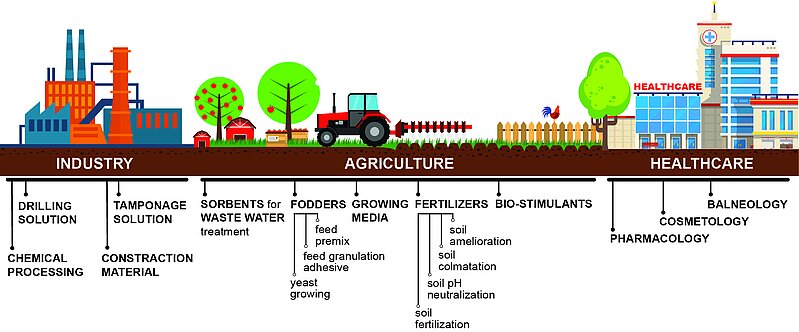Sapropel is a partially and slowly renewable earth resource, an organogenic sediment accumulated in the aquatic environment, in standing or slow-flowing water bodies from residues of aquatic plants and animal organisms, as well as mineral particles already present in the water body or introduced from the catchment area.
Sapropel has a wide range of applications. It can be used in practically any area of the economy, but its great diversity and low level of research hinder the rational achievement of the expected results. In Latvia, the sapropel is widely utilized in agriculture as a fertilizer and in livestock farming as a feed supplement. The identified uses of sapropel include the following areas:
- agriculture and livestock farming – liming, fertilizer, vitamin-mineral feed, green mass;
- construction and building industry:
- binding agent for composite building materials, such as chipboard;
- binding agent for thermal insulation composite materials, such as thermal insulation boards;
- sapropel concrete;
- porous material for construction materials such as drainage pipes and bricks;
- chemical industry – plastics, phenols, solvents, ammonia, lubricating oils, varnishes, paraffin, methyl alcohol;
- mining (mining of underground natural resources):
- flotation reagent for ore enrichment;
- viscosity reducer during drilling;
- heat or thermal energy industry – solid fuel, liquid fuel, coke, gas;
- medicine and veterinary medicine – medicinal mud and applications, medicinal waters and preparations, pharmaceutical materials.
Sapropel research

PhD Karina Stankeviča


 CONFERENCE
CONFERENCE